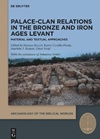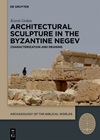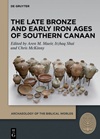| Buchhandlung Heesen | Versandbuchhandlung für Evangelische Theologie |
Impressum | |
| Freudenstadt / Loßburg | Datenschutzhinweise | ||
| Tel. 07446 952 418 1 | Buchhandlung.Heesen@t-online.de | ||
| Da unsere Angebote manuell erstellt werden und während des Seitenaufrufes keine Verbindung zu einer Buchdatenbank aufgebaut wird prüfen wir die Verkaufspreise bei Rechnungsstellung auf Richtigkeit und berechnen den gesetzlich festgelegten Buchpreis. Falls sich dadurch eine Preiserhöhung ergibt werden wir Sie vor Versand informieren, Sie können dann diesem Preis zustimmen oder vom Kauf zurücktreten. Hinweise zum Datenschutz und Cookies | |||
| Geschichte und Archäologie Israels | Geschichte Israels (moderne Geschichte...) | Verfolgung / Holocaust | Reiseführer Israel | Judentum / Judaica | Talmud |
| Arbeit und Sitte in Palästina, de Gryuter | Archaeology of the Biblical Worlds, de Gruyter |
| EDIS - Edition Israelogie, Peter Lang Verlag | zur Reihe Jüdische Schriften |
| Enzyklopädie jüdischer Geschichte und Kultur, EJGK | zur Reihe Jüdisches Lehrhaus - lebendiges Judentum |
| Der Gottesdienst im christlich-jüdischen Dialog, Gütersloher Verlagshaus | Jüdisches Neues Testament |
| Studien zu Kirche und Israel, Neue Folge, Evangelische Verlagsanstalt | |
| zur Reihe Forum Christen und Juden, LIT Verlag | Synagoge |
| zur Reihe Jüdische Religion, Geschichte und Kultur (JRGK) | Tall Zira'a.The Gadara Region Project (2001-2011). |
| zur Reihe JVB Klassiker | zur Reihe Toldot, Essays zur jüdischen Geschichte und Kultur, Vandenhoeck & Ruprecht |
| zur Reihe Judentum und Christentum | Tübinger Judaistische Studien |
| Archaeology of the Biblical Worlds, de Gruyter | ||
 |
Hannes Bezzel Palace-Clan Relations in the Bronze and Iron Ages Levant . Textual and Material Approaches de Gruyter, 2025, 242 Seiten, Hardcover, 978-3-11-140551-3 109,95 EUR  |
Archaeology of the Biblical Worlds Vol 6 Recent studies have demonstrated that ancient Near Eastern societies considered themselves as part of one social fabric, divided not by mode of life or place of residence, but according to traditional associations of kin. Kinship relations appear to maintain their essential integrity over long periods of time, even within complex political organizations. In the past it was common to view state formation as an evolutionary process - from tribe to state - during which former kinship relations and tribal identities dissolve in face of the political identity imposed by the ""state"". Today, however, it seems that there were no evolutionary relations between the tribe and the state, as they both represent identities that coexist at the same time. It is against this background that a common structural element of ancient Levantine polities emerges: their fragmented nature, mostly based on an overarching concept of kinship. This book presents studies of different polities and societies from the Bronze and Iron Ages Levant and beyond, highlighting their kin-based social and political structures, interactions, and ultimate formations, as may be gleaned from both material and textual sources. |
| Archaeology of the Biblical Worlds Vol 5 | ||
 |
Aren M. Maier To Explore the Land of Canaan. De Gruyter, 2021, 376 Seiten, Hardcover, 978-3-11-075776-7 89,95 EUR  |
Archaeology of the Biblical Worlds Vol 4 Studies in Biblical Archaeology in Honor of Jeffrey R. Chadwick This volume is a collection of paper by colleagues, friends and students, in honor of Jeffrey Chadwick. The papers cover the various topic that he has dealt with in his career, including biblical historical geography, and the archaeology and history of the Levant and its environs during the Bronze and Iron Ages, and the Second Temple Period.Following a preface and introduction about the honoree, the volume is divided into 4 sections: Biblical Historical Geography; Bronze Age Canaan and its Neighbors; Iron Age Israel and its Neighbors; Second Temple Israel Contents |
 |
Carni Golan Architectural Sculpture in the Byzantine Negev Characterization and Meaning . De Gruyter, 2020, 684 Seiten, Hardcover, 978-3-11-062802-9 184,95 EUR  |
Archaeology of the Biblical Worlds Vol 3 This book presents a study and catalogue of the early Christian stone architectural decorations from the Negev Desert (Israel). This work is based on the largest sample of decorated architectural elements from the Byzantine Negev (4th–7th century CE) to have been comparatively studied. The analysis provides a key for the characteristics of these aniconic, carved decorations, and an in-depth examination of their symbolic meaning. Contents |
 |
Aren M. Maier The Late Bronze and Early Iron Ages of Southern Canaan De Gruyter, 2019, 285 Seiten, Hardcover, 978-3-11-062670-4 124,95 EUR  |
Archaeology of the Biblical Worlds Vol 2 The Late Bronze Age in the Levant is a period of much interest to archaeologists, historians and biblical scholars. This is a period with intense international relations, rich in ancient sources, which provide historical data for the period, and is a crucial formative period for the peoples and cultures who play central roles in the Hebrew Bible. Recent archaeological research in Israel and surrounding countries has provided new, exciting, and in some cases, groundbreaking finds, interpretations and understanding of this period.The fourteen papers in this volume represent the proceedings of a conference held at Bar-Ilan University in 2014 (with the additional of several invited papers not presented at the conference), which provide both overviews of Late Bronze Age finds from several important sites in Israel and surrounding countries, as well as several synthetic studies on the various issues relating to the period. These papers, by and large, represent a broad view of cuttting edge research in the archaeology of the ancient Levant in general, and on the Late Bronze Age specifically. Blick ins Buch |
 |
Joel Uziel Tel Nagila The Amiran-Eitan Excavations De Gruyter, 2026, 350 Seiten, Hardcover, 978-3-11-050074-5 189,95 EUR  |
Archaeology of the Biblical Worlds Vol 1 This volume is an excavation report on the important Bronze and Iron Age site, Tel Nagila. The site was excavated in the 1960s but the report was never published. Tel Nagila was an important Middle Bronze Age site and a Judahite site during Iron Age II. This report includes chapters by experts discussing the finds, including tombs, pottery and flint artifacts, as well as a spatial analysis and explorations of the cultic nature of the site. Über den Autor Joel Uziel, Israel Antiquities Authority, Jerusalem, David Ilan, Hebrew Union College, Aren Maeir, Bar-Ilan Universtiy. |

